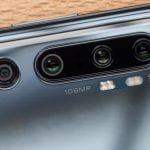
In an official blog post, the tech giant Samsung has revealed its plans for next-gen ISOCELL camera sensors. These improvements are specifically targeted at the video quality. Since video shooting is complex compared to capturing an image. Moreover, video shooting requires capturing 30 frames each second rather than one single frame.
Multi-frame and multi-exposure features are available for cameras. But they are useful for capturing an image. Since they capture two distinct frames i.e., high and low exposure. Followed by capturing, the frames are combined for producing an improved dynamic range. Although this feature is presented on nearly every high-end smartphone but it is not much useful for video shooting. Shooting videos with this feature will require the camera to capture at least 60 frames for generating a video of 30fps. Such requirements overburden the camera sensor, memory, as well as ISP. Resultantly, the temperature of the device raises since it consumes more power.
ISOCELL sensor for improved light sensitivity
Samsung is focusing on dynamic range, light sensitivity, depth sensing, and luminance range for improving video quality. To achieve this purpose, Samsung has developed an advanced high-refractive nano-structure. This structure will be utilized for the optical wall among the color filters of pixels. The light of adjoining pixels will be used to extreme levels. This tech has been named as Nano-Photonics Color Routing by the tech giant. It is expected to arrive in ISOCELL cameras in 2024.
Sensor for enhancing the video dynamic range
Samsung is likely to introduce an in-sensor, single-exposure HDR tech for improving the dynamic range of videos. The latest camera sensor by Samsung i.e., ISOCELL HP3 consists of two readouts. This readout can capture 12-bit HDR. However, the company is not limiting its efforts to only this range. It is looking forward to working on 16-bit HDR for a wide dynamic range of videos.
iToF sensor for capturing enhanced portrait videos
iToF is the Time of Flight. It is a depth sensor combined with an ISP. Samsung will reportedly utilize the iToF for improving the feature of portrait videos. It implies that the depth-sensing will be carried out solely on behalf of the sensor. Eventually, the device will consume less power and won’t heat up quickly. Such a tech can drastically improve the quality of portrait videos, particularly in areas with low light, narrow objects, and recurring patterns.
Given these improvements, Samsung will definitely step ahead in terms of the quality of still images and videos on smartphones. All such technologies can be expected to arrive by 2023 or 2024. Eventually, we can also anticipate these sensors to be the part of Samsung Galaxy S24 and Galaxy S25.
Research Snipers is currently covering all technology news including Google, Apple, Android, Xiaomi, Huawei, Samsung News, and More. Research Snipers has decade of experience in breaking technology news, covering latest trends in tech news, and recent developments.